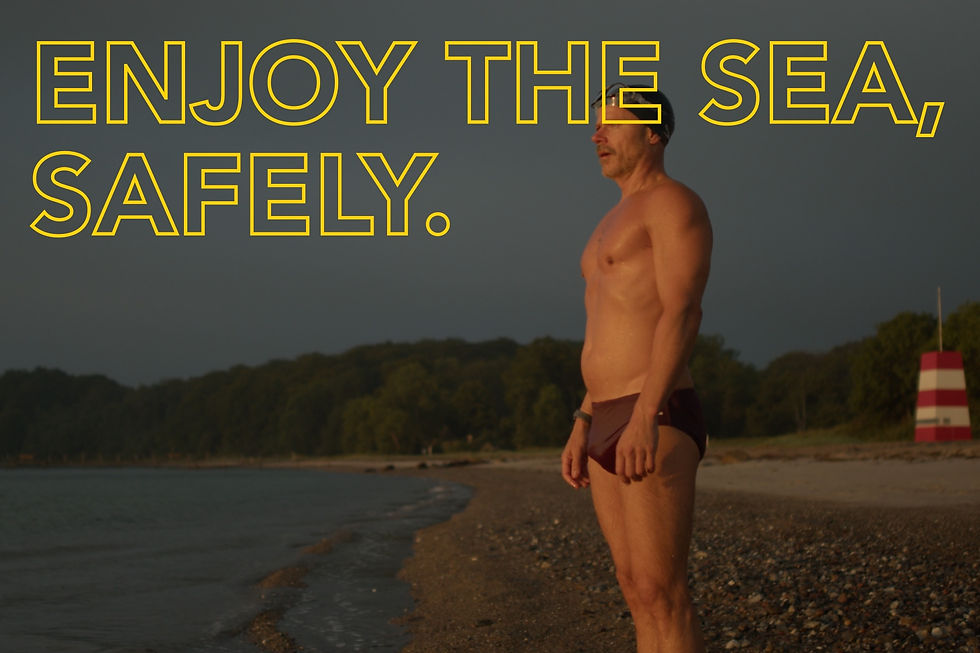Cold Shock
- William
- Jul 7
- 2 min read
Cold water shock happens when your body suddenly hits cold water (usually below 15°C) and this triggers a powerful gasp reflex. This is dangerous because if it happens when your head is underwater, instead of breathing in air you’ll inhale water…
Cold Water Shock usually happens on a warm day, when the sun is shining and the sea looks calm. So you jump or dive in. But the cold slams into your body like a punch to the chest. You gasp - and if your head’s underwater, that gasp pulls liquid straight into your lungs.
You try to swim, but your muscles won’t respond properly. You can’t breathe. Your muscles stiffen. In just a few seconds, even a strong swimmer can lose control — and that’s how people drown from cold water shock, just metres from shore.
How to Stay Safe
To stay safe, follow this simple 3-step process:
Step 1 = Do your Research
Before you swim, check the water temperature. If it’s below 15°C, anticipate cold shock. Don’t be fooled by warm sunshine — places like quarries, lakes, and coastlines with cold upwellings can remain dangerously cold even in summer. Just knowing the risk gives your body and mind the chance to prepare.
Step 2 = Enter Slowly
Ease yourself in. Splash cold water on your arms, chest, and neck. This helps your body adjust gradually and reduces the sudden shock. Jumping straight in is where the problems begin — especially if you’re not used to cold water, which otherwise builds natural resistance over time.
Step 3 = Take a Minute to Acclimatise
Once you’re in, float. Stay still and lie on your back with arms and legs extended — this is your most stable, buoyant position. Give your body one minute to adjust: your breathing will slow, your muscles will relax, and your mind will settle. Only then should you start to swim. That minute could save your life.

To learn more, book a Masterclass with William
Comments